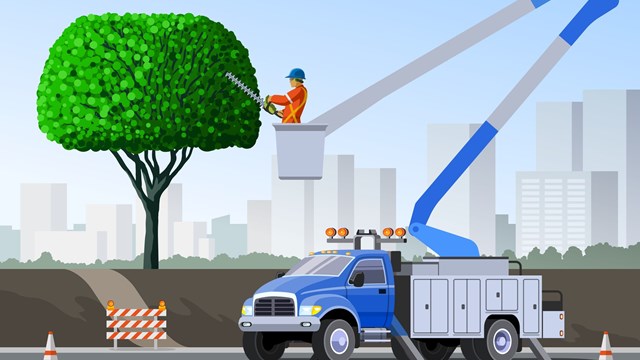It’s the ultimate fear of anyone who has ever remodeled anything larger than a birdhouse: A month into the project, the contractor disappears – taking half the budgeted money and leaving a large hole in the building in exchange.
Unfortunately, it’s a scenario that hascropped up more frequently during the past few years – not necessarily because of an increase in shady characters, but because the recession and the beating the construction industry has endured since the housing bubble burst have left many formerly reliable firms on shakier footing.
The vast majority of contractors are honest and capable of fulfilling their obligations, experts point out. “I’ve had 40 years of working with contractors,” says H. Alan Mooney, PE, president of Criterium Engineers in Portland, Maine, with offices in 35 states. “They’re very well-intended and they’re good people.”
That said, “There are no guarantees, ever,” he says.
Steps to Protect Your Condo
No association wants to be in the position of having to cover everything with blue tarp while desperately thumbingthrough the Yellow Pages. While there may never be any guarantees, there are steps a board or property manager can take to make sure that a project is seen to completion.
When going into a construction or maintenance project, there are two risk-assessment questions to consider. “Number one is: How do you minimize the risk of the problem to begin with?” says Mooney. “Number two: If something goes wrong, how do you pick up the pieces?”
First of all, experts say, the bidding process (See sidebar) needs to involve more than flipping open a phone book or calling the guy the board president’sbrother knows.
Mooney recommends beginning with a pre-qualification letter, researching firms and asking a builder for referencesfrom projects completed two to five years ago. That’s for two reasons: 1) It guarantees the firm has a track record going back more than a few months and 2) if a contractor just finished the work, the owner may not yet know whether he or she did a good job.
After the responses come in, pick the best five or so and invite them to bid on the project. The winning bid, nearly everyone interviewed pointed out, is not automatically the lowest bid.
“You’ve got to look at more than the raw number,” says John Shaffer, an attorney and engineer at Marcus, Errico, Emmer & Brooks, PC, a law firm based in Braintree, Massachusetts, whoechoes the “no guarantees” warning. “The contract is important, but it’s only as good as the company behind it. Sometimes it’s worth paying a little more to get a more established, more stable contractor, versus just looking solely at the lowest cost.”
Performance and Payment Bonds
In the case of a large-scale project, Shaffer says, an association can ask that the contractor obtain performanceand payment bonds. These ensure that if the contractor goes bankrupt before the project is finished, all of the subcontractors would still be paid and the insurance company would guarantee that the work is completed for the price in the original contract.
“Especially if there’s a bankruptcy and there are few assets, they (the sub-contractors) will make every effort to get it from you,” Shaffer says. (Those efforts could include placing mechanic’sliens on the property. Even though Shaffer does not believe such action should apply to a condominium’s common areas, it could still take months to clear up the issue.)
“There are costs associated with obtaining these bonds,” Shaffer says, adding that they could increase the price of the project by 5 or 10 percent, depending on its size. “No contractor is going to obtain bonds and eat the costs. You’re essentially buying a limited form of insurance. Condominium associations and trusts are dealing withother people’s money. A lot of times, they think it’s worth the expense.”
Smaller contractors, however, may not be interested in or able to obtain the bonds. And for smaller projects, the increase in costs might not be worth the extra measure of security.
“If a project is under $5,000, pick a good contractor and hope for the best,” advises Stephen DiNocco, CMCA, AMS, of Affinity Realty and Property Management in Boston. Smaller projects, he points out, also are unlikely to drag on long enough for an association to have to worry whether the contractor will still be solvent at the end of the day.
If it’s a larger project (say, over $200,000), one scheduled to go on for more than a couple of months, or complicated enough where it would be detrimental for a new contractor to have to come in and start over, an association might want to seriously consider the bonds.
“If the thing does fall apart, it’s almost a given that the new contractoris going to say, "I wouldn’t have done it that way,’ ” says Mooney.
Secure the Site
If a contractor does go bankrupt in the middle of a project, there are two things an association wants to do immediately: secure the site and any materials and find someone who can finish the job. Mooney suggests asking the architecture or engineering firm that drew up the bid documents to handle the first part of that equation, since they will understand safety codes and potentially litigious items, such astripping hazards. They also can assess where the project stands and what still needs to be done.
“If this thing is 80 percent done, that’s a whole different equation than if it’s 20 percent,” says Mooney. “At that point, an investment of a couple of hours is time very well spent. [The firm] can head off thousands and maybe tens of thousands of dollars of headaches later on.”
If you don’t have a performance bond, “you don’t want to have some other contractor come in and… say, “Well, I can’t tell you how much it will cost, but I can do it for time and materials.’” That’s a big no, Mooney explains. “You just lost control of the project altogether.”
As for whom to call first, go back to the other bidders. “I've got some sense of them as a business, and they were interested enough to submit a proposal,” he says.
On the smaller projects, Mooney points out, just because you don’t have completion bonds does not mean the association can’t ask for any reassurance. It could, for example, ask for a letter from the contractor's bank assuring that he or she has a line of credit or a month’s worth of payroll in the bank.
To a certain extent, an association can control the purse strings to make certain the work is being performed in a timely fashion (and that there’s enough leftover to cover any problems). The days of a contractor getting up to one-half of their payment before they even step on a site are gone.
‘Don’t Pay Anything up Front’
“The current rules of the game: You don’t pay anything up front,” says Ralph Noblin, PE, president of Noblinand Associates, LC, in Bridgewater, Mass., and Dover, N.H. “Historically, contractors would want one-third or one-half up front. You’re crazy to sign on to something like that, especially in these times.”
“I would never give anyone money until the materials are on the site,” DiNocco agrees. “The day you come with the materials to do the job, I’ll give you some money. It may not be one-third.”
DiNocco worked with an associationthat was doing a $30,000 carpeting job. “The guy asked for half up front.
I warned them: “Don’t do it.’ A week later, he declares bankruptcy. You’ll never get that money back.
“I really fight for no deposit until the materials are on the job,” DiNocco says. That way, if something goes wrong, at least an association has something to show for their money. A contractor “can’t take the materials from you. If a guy tells me he needs one-third, and most of the job is labor, it worries me.If a guy is coming in to paint, that’s all labor. If you need money up front, that means you can’t make your payroll. That’s a big red flag for me.”
Agreeing on 30-day payments from the day a bill is submitted and retainage (holding back typically five percent of any bill until the work is entirely finished) are other ways of ensuring quality control. Before an association pays eachbill, they need to be certain the work has been done to their satisfaction.
In terms of oversight, the range can run from simply giving a contractor your blessing to having an independent party on-site representing the owner all day, every day. (This option can getquite expensive.) “What we usually do is average once a week,” says Noblin, adding that it’s important to vary the day and time spot checks are done. “If you show up at 10 a.m. every Tuesday morning, everything will be going great.”
Final Punch List
Noblin suggests paying close attention to the final inspection project closeout: “Who’s going to say this place is done, done, done?” Items to check include the release of mechanic’s liens, which means all the subcontractors have been paid; making sure any warrantiesare squared away; and drawing up a final punch list. Two months down the road, you don’t want to be saying, “Gee, I didn’t realize he didn’t paint the backside of the dormer or behind the chimney,” says Noblin. “When you write that final check, you want to be sure it’s really done. There’s done and then there’s really done.”
“In the end, there is no foolproof way to say, ‘I’m not going to run into any problems at all.’ Even the best of companies run into problems: They overextend themselves, or maybe the people they’re working for didn’t pay them. It just turns into a mess for everybody. That’s going to happen every once in a great while,” says DiNocco. “Do your homework up front, ask for as much assurance as you can, offset as much liability as you can and go for it.”
Yvonne Zipp is a freelance writer and a frequent contributor to New England Condominium magazine.







Leave a Comment